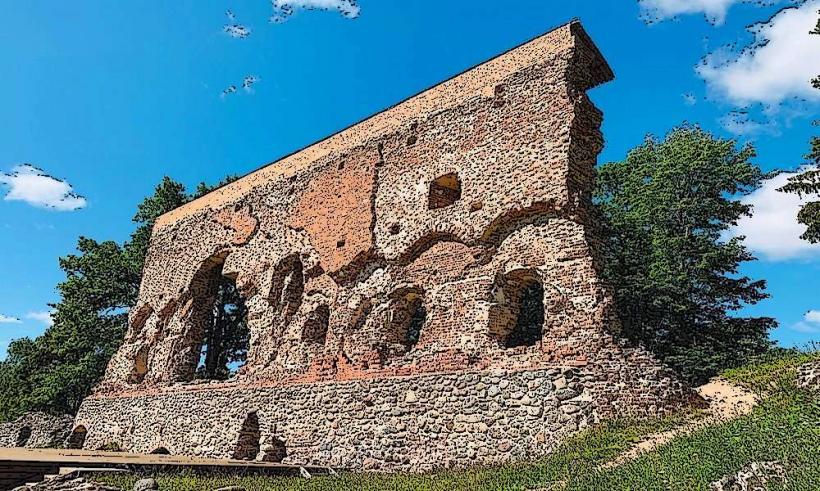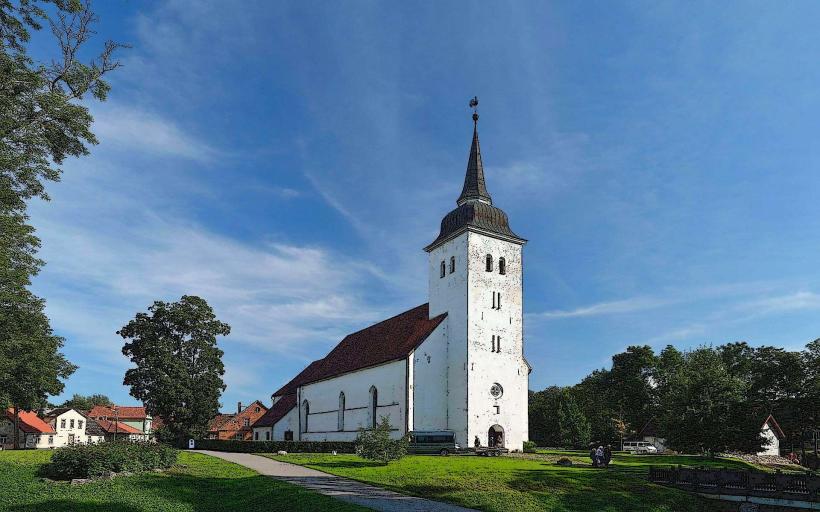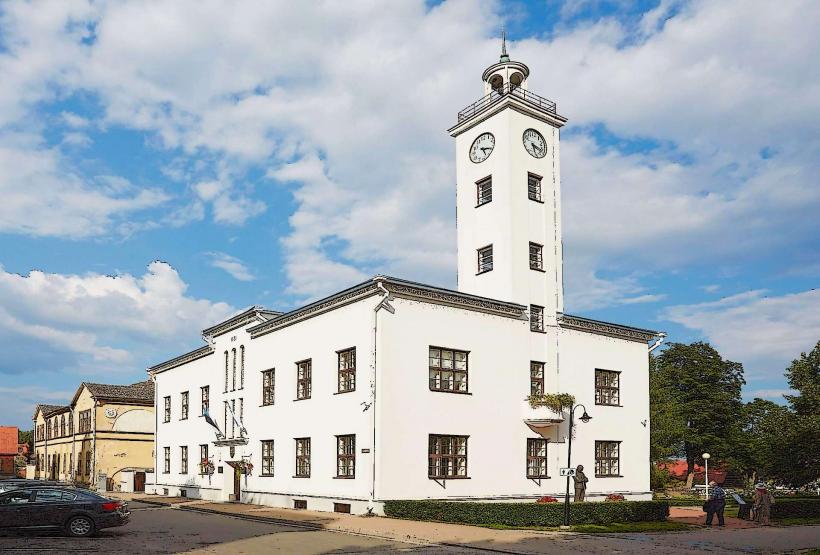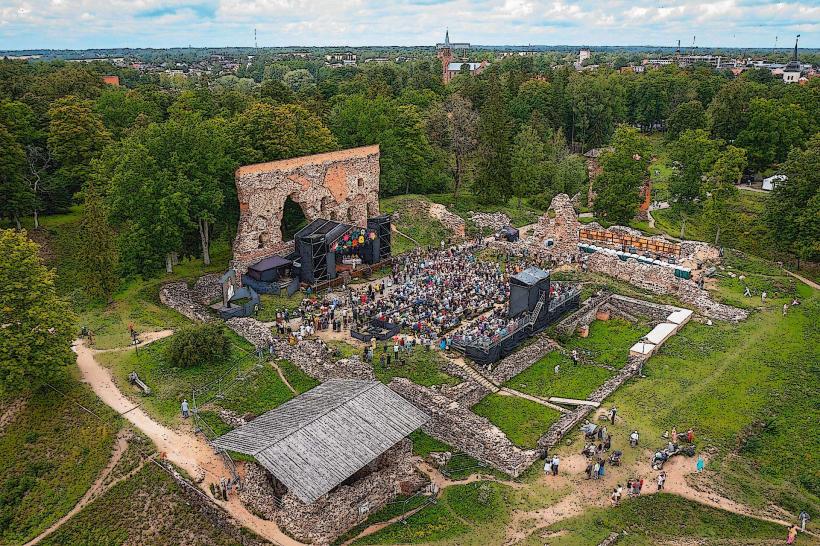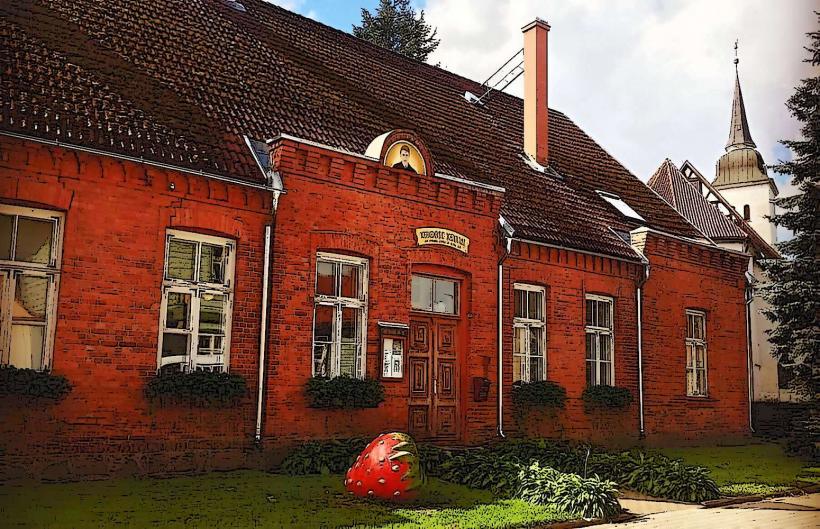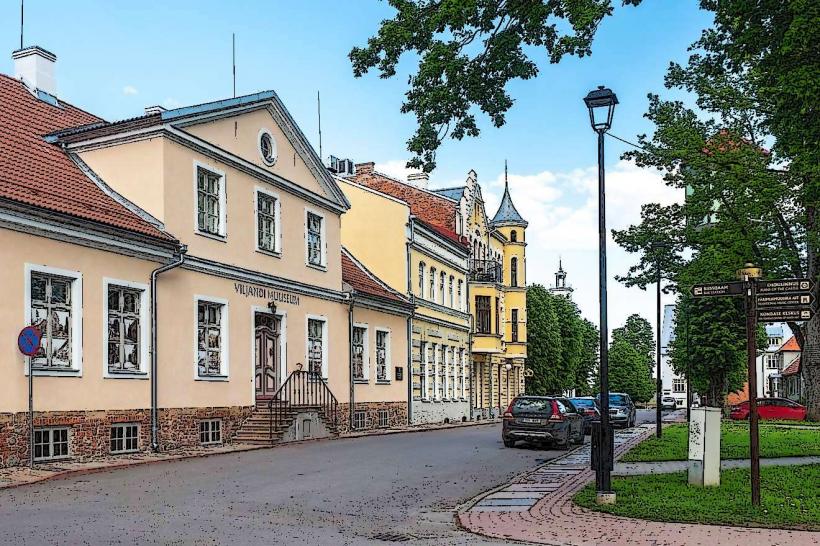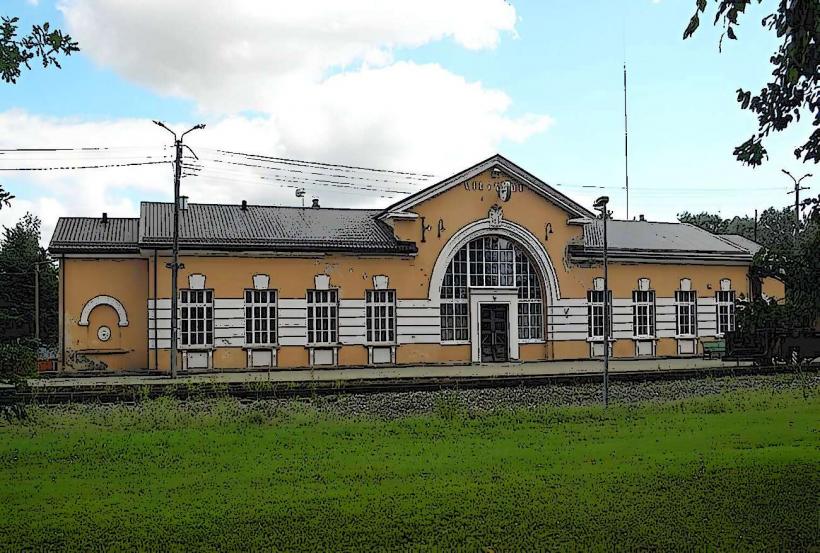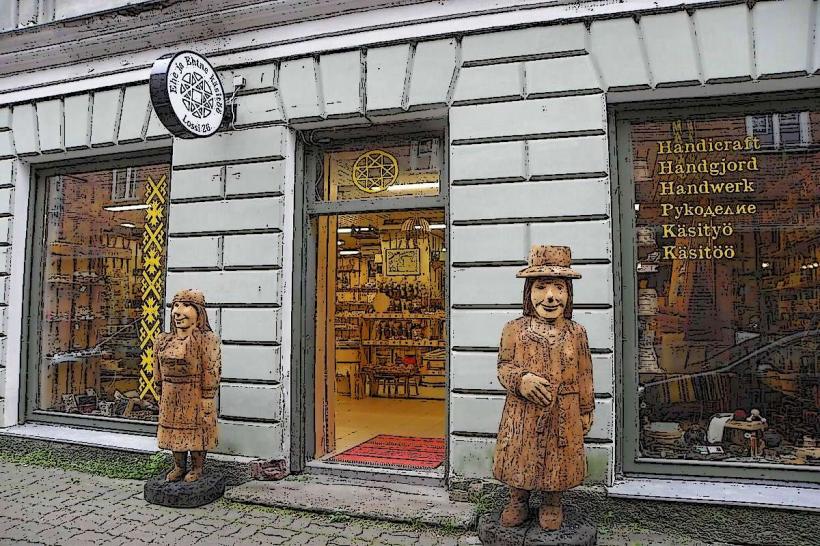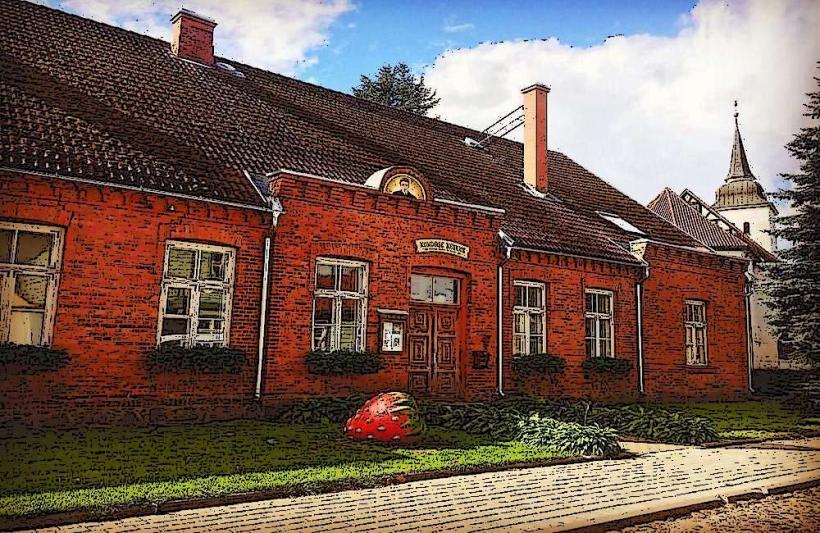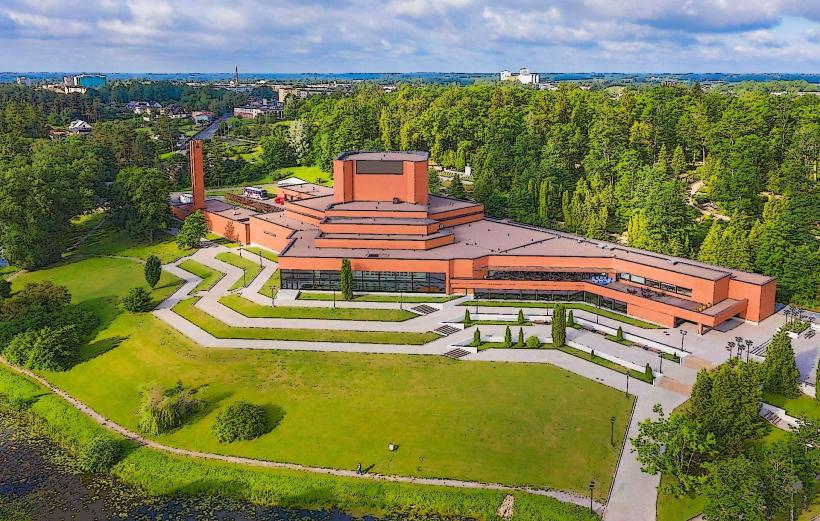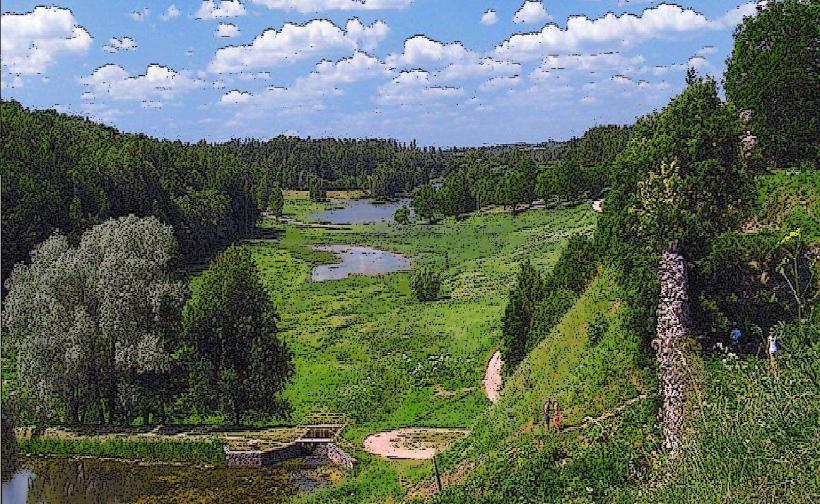Information
City: ViljandiCountry: Estonia
Continent: Europe
Viljandi is a picturesque town located in the southern part of Estonia, known for its rich history, vibrant cultural scene, and beautiful natural surroundings. It is one of Estonia’s oldest towns, with roots dating back to the medieval period. Viljandi is often associated with traditional Estonian folk music, scenic landscapes, and its role as a cultural hub in the region.
Geography and Setting
- Location: Viljandi is situated approximately 160 kilometers (100 miles) south of Tallinn, the capital of Estonia, and is the administrative center of Viljandi County. It lies near Viljandi Lake, one of the town's key natural attractions. The town is positioned at the crossroads of several important regional roads, making it accessible by car, bus, or train from various parts of Estonia.
- Climate: The town experiences a temperate continental climate, characterized by cold winters and warm summers. The average temperature in winter is below freezing, while summer temperatures are mild, typically ranging from 15°C to 25°C (59°F to 77°F).
Historical Significance
- Medieval Beginnings: Viljandi’s history can be traced back to the 12th century, when it was first mentioned in historical records. The town grew around a castle built by the Germanic Crusaders, which played an important role in the region during the Middle Ages. The Viljandi Castle, a prominent landmark, was built in the 13th century by the Teutonic Knights and served as a center of power in the area.
- Swedish and Russian Periods: Throughout its history, Viljandi has been influenced by various powers. It was part of the Swedish Empire in the 17th century, and later came under Russian rule as part of the Governorate of Livonia. These periods left their mark on the town’s architecture, culture, and development.
- Estonian Independence: Following Estonia’s declaration of independence in 1918, Viljandi flourished as a regional center, with a focus on agriculture, trade, and cultural activities. During the Soviet era, the town saw industrial development, but it retained much of its traditional character and became a significant cultural and historical hub in southern Estonia.
Key Attractions
Viljandi Castle:
- The Viljandi Castle ruins are among the most iconic landmarks in the town. Originally built by the Teutonic Knights in the 13th century, the castle was an important military and administrative center during the Middle Ages. The ruins are set on a hill overlooking Viljandi Lake and offer visitors spectacular views of the town and surrounding countryside.
- The site is a popular spot for visitors to explore, with remnants of walls, towers, and the castle’s courtyard. The Castle Hill is also a venue for cultural events, including outdoor concerts and performances.
Viljandi Lake:
- Viljandi Lake is a central feature of the town, offering a serene setting for a variety of recreational activities. The lake is surrounded by lush green areas and offers opportunities for boating, fishing, swimming, and picnicking. The lake promenade provides scenic walking paths along the water, and in the summer, the area becomes a popular spot for locals and tourists alike.
The Folk Music Museum:
- Viljandi is known for its deep connection to Estonian folk music, and the Folk Music Museum celebrates this heritage. The museum is located in a historic building in the town center and features exhibits on traditional music instruments, songs, dances, and the cultural significance of folk music in Estonia. It provides visitors with an insight into how folk music has evolved in the region and its continued influence on modern Estonian culture.
St. John's Church:
- St. John's Church, a beautiful medieval church built in the 14th century, is one of the most significant religious buildings in Viljandi. The church is notable for its Gothic architectural style and its well-preserved interior, including its wooden altarpiece and painted ceiling. It is an active place of worship and a popular site for tourists interested in religious history and architecture.
Viljandi Culture Centre:
- The Viljandi Culture Centre is a modern venue that hosts a wide range of cultural events, including concerts, exhibitions, theater performances, and festivals. It plays a vital role in the town’s artistic life and serves as a gathering place for both local and international artists. The center is housed in a converted factory building, blending industrial architecture with modern cultural offerings.
Pikk Street (Long Street):
- Pikk Street is one of the most charming streets in Viljandi, lined with old wooden houses, small shops, and cafes. It is a pleasant area to wander, offering a glimpse of the town’s historical character. The street connects the town’s Old Town to the Viljandi Castle, making it a popular route for visitors exploring the area.
Lake Viljandi Beach:
- The Lake Viljandi Beach is a popular destination for locals during the summer months. The sandy beach is ideal for sunbathing, swimming, and enjoying the natural beauty of the lake. The area also features picnic spots and playgrounds, making it an excellent location for families.
Kirsimäe and Looduskaubandus Nature Trails:
- For nature enthusiasts, the Kirsimäe Nature Trail and the Looduskaubandus Nature Trail offer scenic walking and hiking opportunities in the surrounding forests and hills. These trails provide a chance to explore the area’s rich natural environment, with diverse flora and fauna, as well as views of the lake and town.
Culture and Lifestyle
- Folk Music Tradition: Viljandi is known as the heart of Estonian folk music. The town is home to the Viljandi Folk Music Festival, one of the largest and most famous folk music festivals in Europe. Held every summer, the festival attracts thousands of visitors who come to enjoy performances by both local and international folk musicians. The festival’s lively atmosphere, combined with the town’s traditional music scene, makes it a hub for cultural expression.
- Local Craftsmanship: Viljandi also has a strong tradition of craftsmanship, particularly in textiles and woodworking. Visitors can explore local shops and galleries showcasing handmade crafts, textiles, and traditional Estonian products. The town is known for its strong sense of community, with a focus on preserving local traditions while embracing modern creativity.
- Vibrant Arts Scene: Viljandi has a growing contemporary arts scene, with a number of art galleries, workshops, and cultural events. The town supports local artists and offers a platform for artistic expression across various mediums. This combination of traditional and modern cultural life makes Viljandi an exciting place for both locals and visitors.
Festivals and Events
- Viljandi Folk Music Festival: This is the most significant cultural event in Viljandi, attracting thousands of visitors each year. The festival celebrates folk music from all over the world, featuring concerts, workshops, and performances in various venues across the town.
- Viljandi Jazz Festival: This annual event brings together jazz musicians and enthusiasts from around the world. The festival includes performances at various locations in the town and offers a chance to experience the town’s vibrant music scene.
- Viljandi Christmas Market: During the holiday season, the Viljandi Christmas Market takes place in the town’s center. It features local crafts, food, and festive decorations, creating a magical atmosphere that draws both locals and tourists.
Transportation
- By Car: Viljandi is easily accessible by car from Tallinn, Tartu, and other parts of Estonia. It is located on the E263 highway, which connects the town to major cities.
- By Bus: Viljandi is well-connected by bus, with regular services to and from Tallinn, Tartu, and other Estonian towns. The bus station is located in the town center.
- By Train: Viljandi is also accessible by train from Tallinn and other cities. The train station is a short distance from the town center and offers convenient access to the area.
Atmosphere
- Charming and Relaxed: Viljandi has a relaxed, small-town atmosphere, with a strong sense of community and a rich cultural heritage. The town’s combination of natural beauty, historical sites, and vibrant cultural life makes it an ideal destination for travelers seeking a mix of history, culture, and outdoor activities.
- Nature and Tranquility: With its proximity to Viljandi Lake and surrounding forests, the town offers plenty of opportunities to enjoy nature. The peaceful atmosphere makes it a perfect place to unwind, whether you're exploring the local attractions, walking by the lake, or simply enjoying the beauty of the surroundings.
Viljandi is a hidden gem in Estonia, offering a mix of history, culture, and natural beauty. Whether you're visiting for the folk music festival, exploring the castle ruins, or enjoying a peaceful day by the lake, the town provides a unique and authentic experience of Estonian life.

